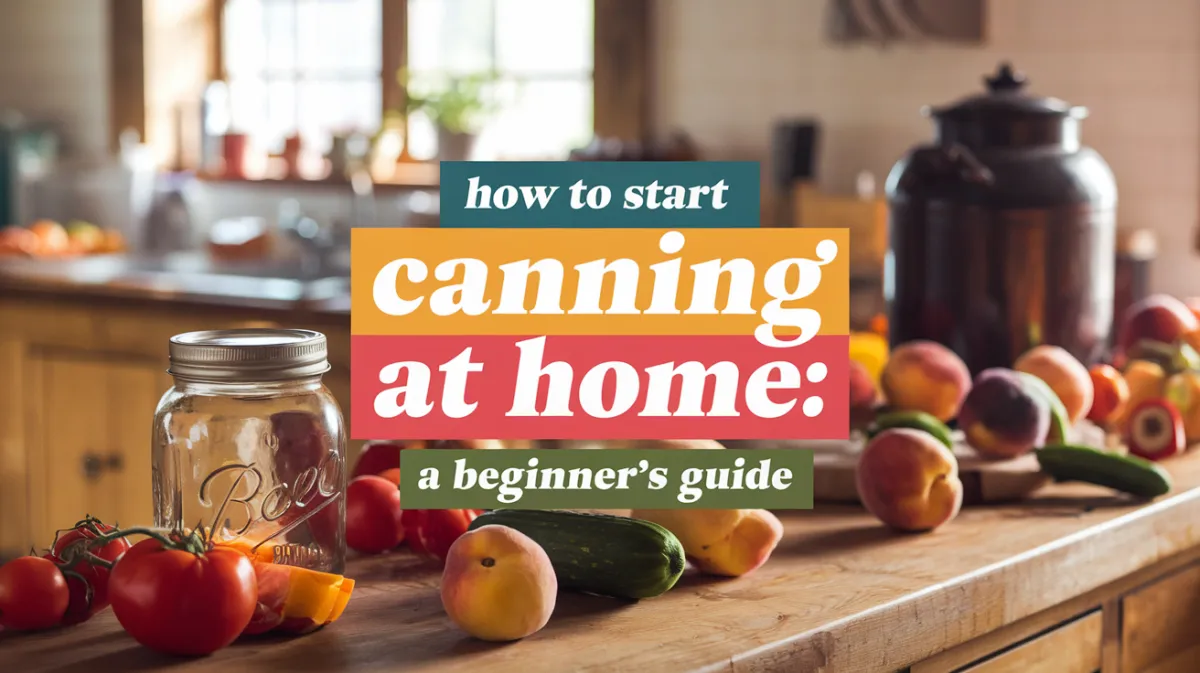
How to Start Canning at Home: A Beginner’s Guide
I remember the first time I tried canning—standing in my kitchen with fresh tomatoes from the garden, excited but unsure. I’d watched my grandma do it a thousand times, but now it was my turn. It wasn’t perfect, but I learned a lot—and the jars of homemade salsa I ended up with made it all worth it.

If you're looking to start canning at home but aren't sure where to begin, you're in the right place. In this guide, I'll walk you through the basics, the tools you’ll need, and step-by-step instructions to help you feel confident as you preserve the bounty of your garden (or farmer's market haul). Let’s dive in and get you canning like a pro!
What You Need to Know Before You Begin Canning

The first thing to know before you even begin is that canning is all about safety. It's essential to use the right equipment and follow proper steps to avoid any food safety issues, like botulism. But don’t worry—once you get the hang of it, it becomes second nature.
Canning is the process of preserving food by sealing it in jars and heating the jars to kill bacteria and enzymes. This helps your food last much longer than if it were stored in the fridge or freezer. While it’s a great way to preserve fruits, vegetables, and even meats, certain foods are not suitable for canning, like dairy or foods with low acidity. Stick to high-acid fruits and vegetables for your first attempts, like tomatoes, peaches, and cucumbers.
Basic Canning Equipment
Now, let's talk about the gear you’ll need to get started.

Here’s a list of the essential tools you’ll need:
Canning Jars: You'll need mason jars with proper canning lids and rings. Sizes vary, but the 16 oz or quart size is perfect for most beginners.
Pressure Canner or Water Bath Canner: These are the two main methods of processing jars. A pressure canner is for low-acid foods like meats or vegetables, while a water bath canner works for high-acid foods like fruits and jams.
Jar Lifter: This tool allows you to safely remove jars from boiling water without burning yourself.
Funnel, Tongs, and Magnetic Lid Lifter: These handy tools make the process smoother and more hygienic.
Step-by-Step Guide to the Canning Process
1. Prepare Your Food
Before you start canning, you need to get your fruits and vegetables ready. Here's what you should do:
Wash: Clean all your produce thoroughly to remove dirt and chemicals.
Peel: For some fruits like peaches or tomatoes, you may need to peel the skins off.
Chop or Slice: Cut your produce to fit into the jars, whether that’s chopping tomatoes, slicing cucumbers, or cutting peaches into halves.
Blanch: Some foods, like tomatoes or peaches, may need blanching to loosen the skins before canning.
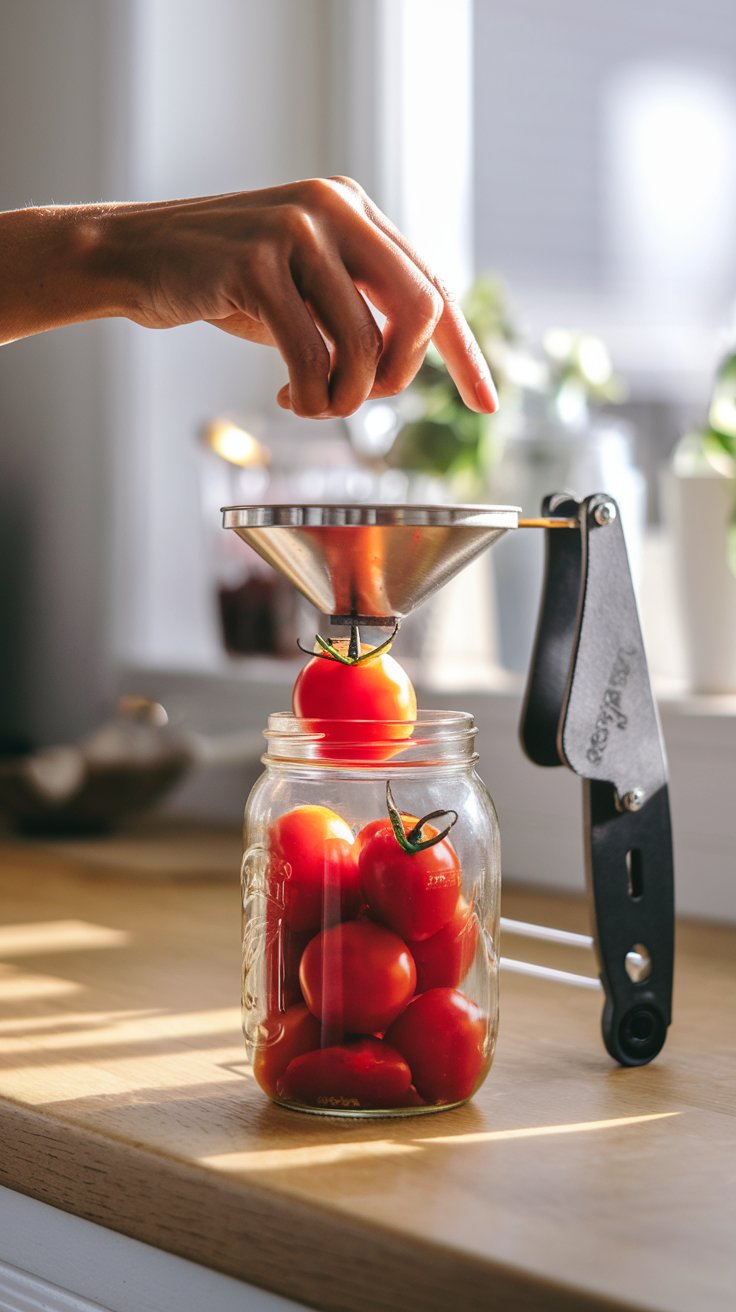
2. Sterilize the Jars and Lids
Sterilizing your jars and lids is crucial to avoid contamination. Follow these steps:
Boil Water: Bring a large pot of water to a boil.
Sterilize: Place your mason jars and lids in the boiling water for about 10 minutes. This kills any bacteria or germs that might cause spoilage.
Use a Jar Lifter: After sterilizing, carefully remove the jars with a jar lifter to avoid burns or contamination.
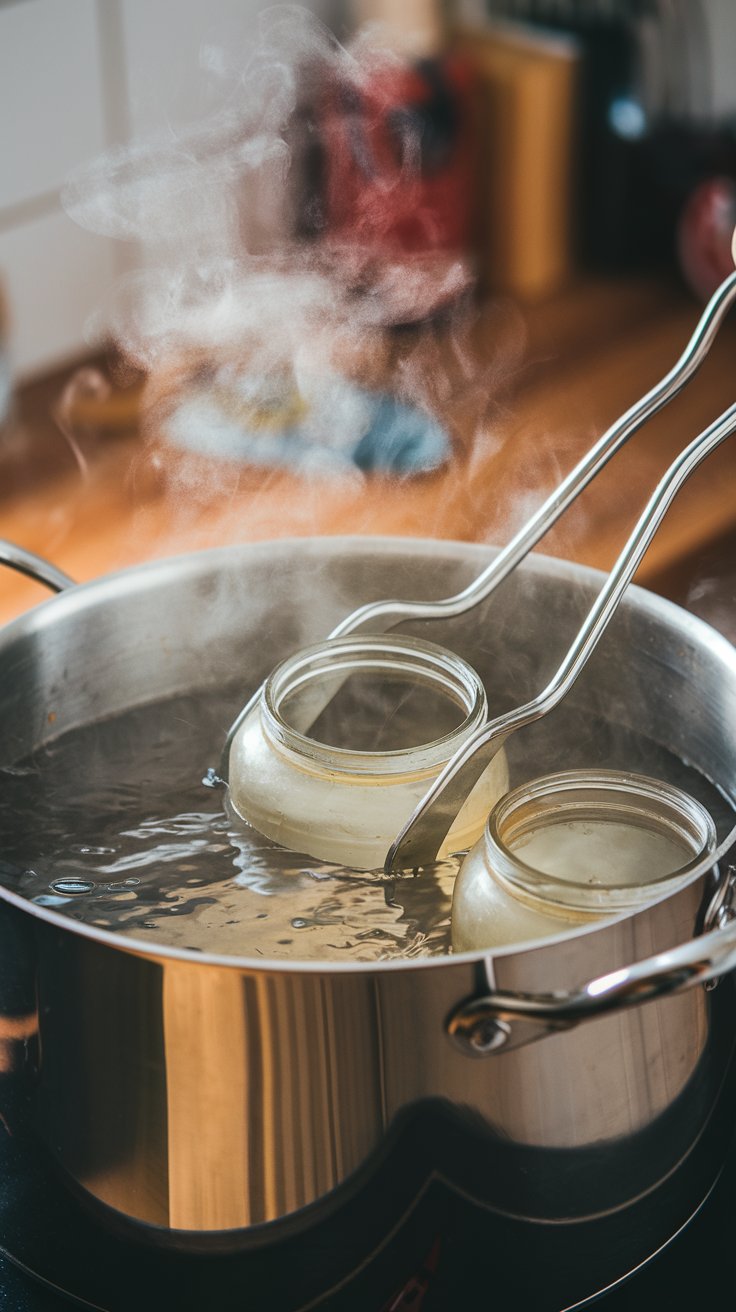
3. Pack the Jars
Now it’s time to pack your prepared produce into the jars. There are two methods to choose from:
Hot Pack Method:
Heat your fruits or vegetables before packing them into the jars.
This method works well for tomatoes and meats.
Cold Pack Method:
For beginners, cold packing is easiest—just pack the raw, prepared produce directly into the jars.
This method is great for fruits like peaches, jams, or cucumbers.
Tip: Leave about 1/2 inch of space from the top of the jar to allow room for expansion during processing.
4. Seal and Process the Jars
To properly seal your jars:
Wipe the Rim: Use a clean cloth to wipe the jar rims to remove any food residue, ensuring a tight seal.
Place the Lids: Put the sterilized lids onto each jar, making sure they fit snugly.
Tighten the Rings: Twist the metal rings onto the jars. Don’t overtighten them—just enough to hold the lid in place.
Now that your jars are sealed, it’s time to process them:
Pressure Canning: If you’re canning low-acid foods like meats or vegetables, you’ll need a pressure canner to achieve the right temperature.
Water Bath Canning: For high-acid foods like fruits, jams, or pickles, a water bath canner will suffice. Process the jars according to your recipe's recommended time.
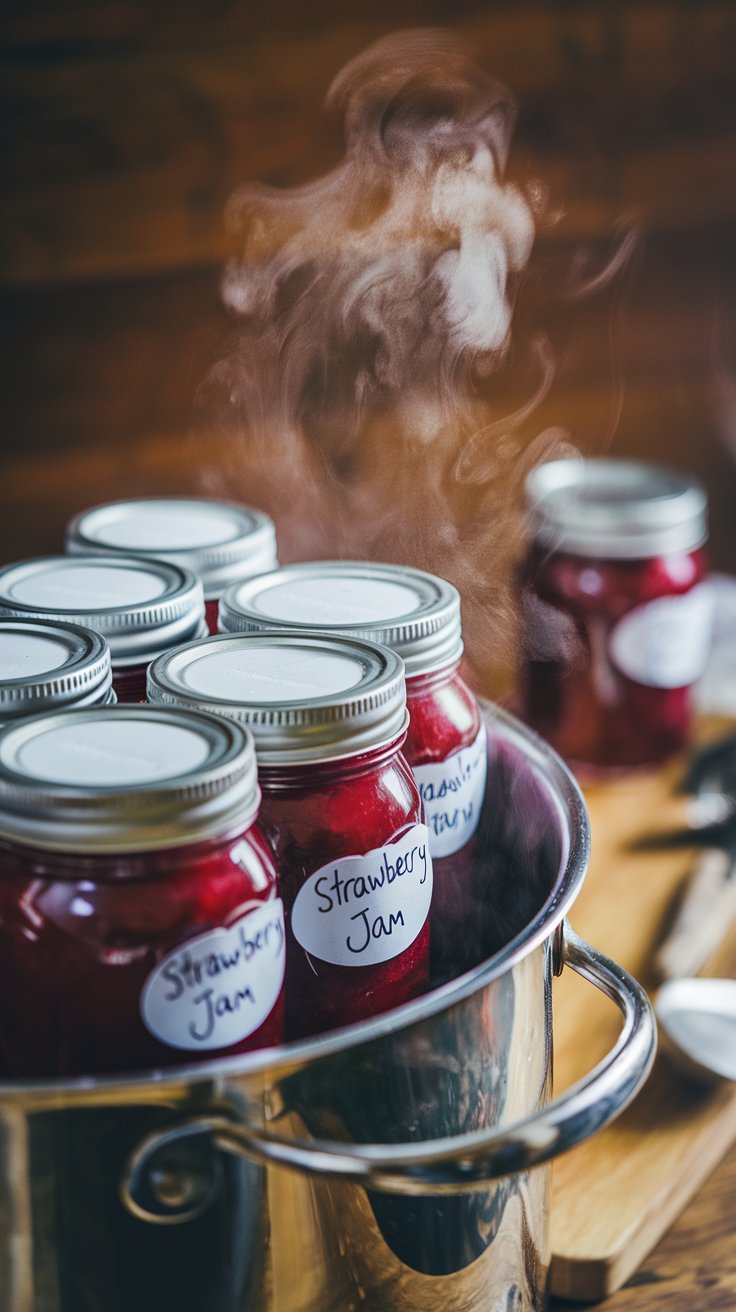
5. Cool and Store the Jars
Once your jars are processed, they need to cool and form a vacuum seal:
Remove the Jars: Carefully lift the jars out of the canner and set them on a cooling rack or clean towel.
Wait for the Seal: Let the jars cool for 12–24 hours. As they cool, you should hear the satisfying “pop” of the lids sealing into place.
Check for Proper Seals: Once cooled, check the lids to make sure they’re sealed tight. Press down on the center of each lid—if it doesn’t pop back, the jar is sealed.
Store: Once sealed, store the jars in a cool, dark place. Properly sealed jars can last for up to a year!
By following these detailed steps, you'll be able to safely preserve your harvest, whether you're canning fruits, vegetables, or even meats. The canning process might seem intimidating at first, but once you’ve done it a few times, it will become second nature. Enjoy the fruits of your labor all year round!
Common Canning Mistakes to Avoid
Canning can be a bit tricky when you're first starting out, so here are a few mistakes to avoid.
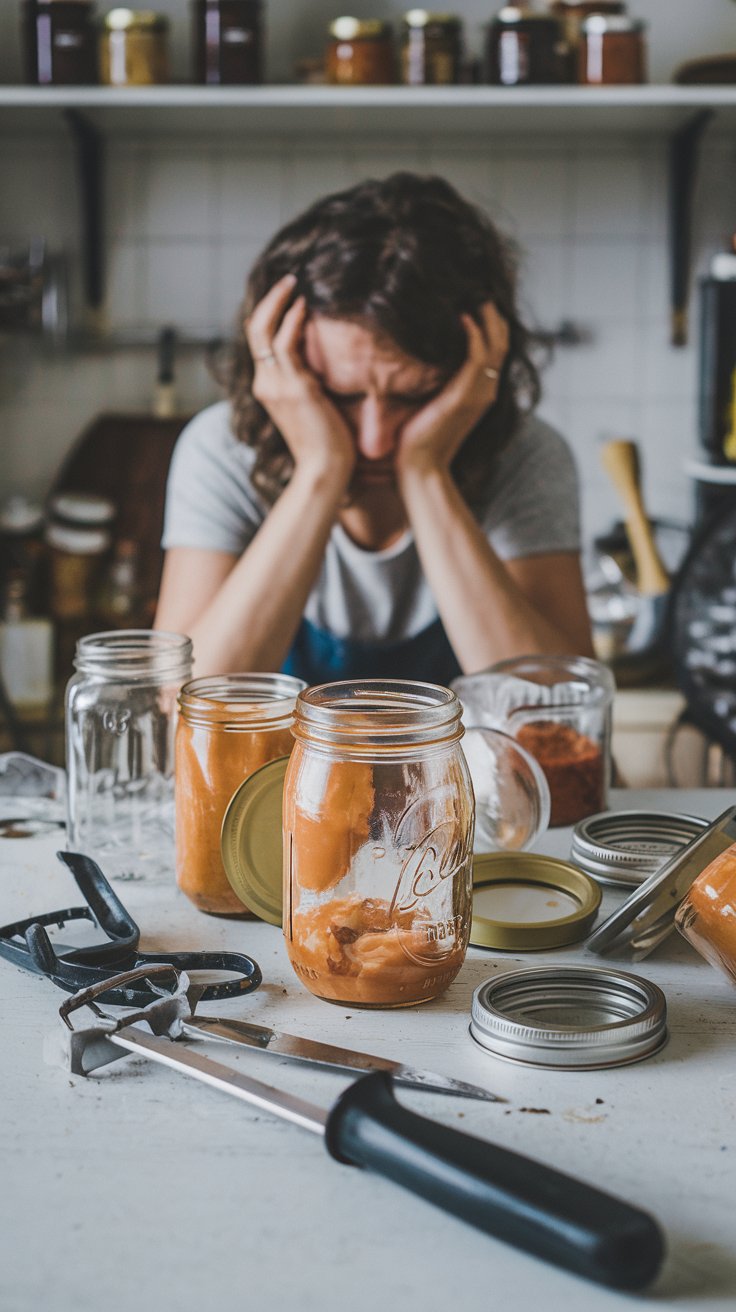
Not Using the Right Jars:
Always use jars made for canning. Avoid reusing jars from store-bought products, as they may not seal properly.Skipping the Sterilization Step:
Sterilizing your jars ensures they are clean and ready for use. A quick rinse won’t cut it!Overfilling Jars:
Leave about half an inch of space at the top of each jar. Overfilling can prevent a proper seal.Improper Processing Time:
Processing times vary depending on the food you're canning. Always refer to a trusted canning guide to ensure you're following the correct times.
Tips for Success
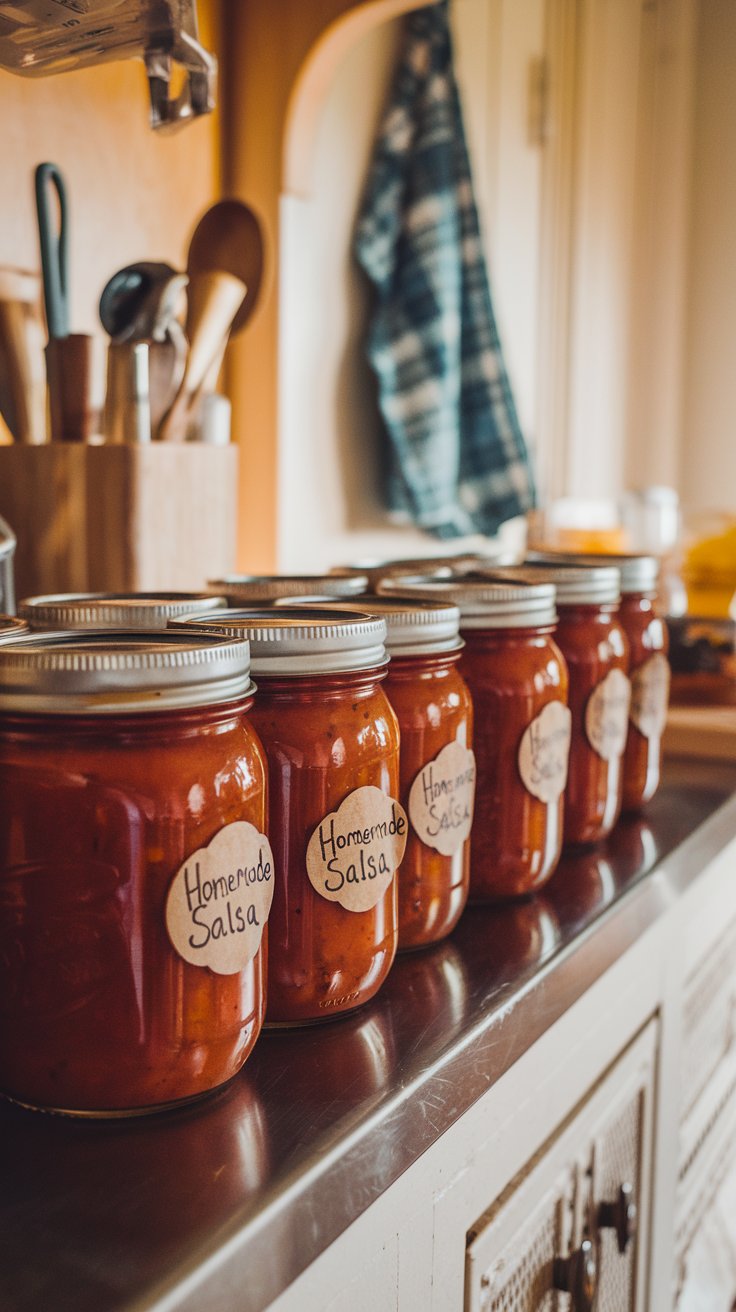
To make sure your canning experience is a success, here are some tips:
Double-check that all jars have sealed properly. You can test by pressing the center of each lid—if it doesn’t pop back, the jar has sealed.
Store your jars in a cool, dark place, and make sure they’re away from any direct sunlight or heat sources.
If you’ve never canned before, start small. Try canning just a few jars of your favorite fruit or veggie before moving on to larger batches.
Conclusion
There you have it—your beginner’s guide to canning at home! Now that you know the basics, it’s time to gather your gear, pick some fresh produce, and start preserving the season. Canning is a rewarding process that’s both fun and practical. Plus, there’s nothing like enjoying homemade preserves all year long.
